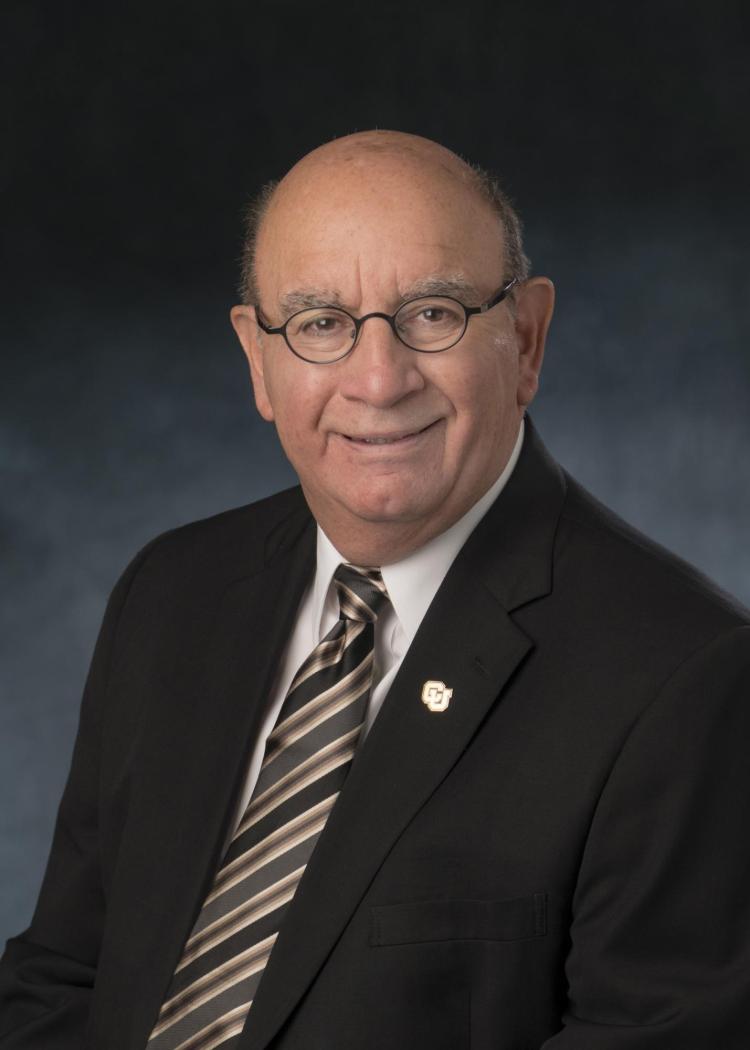Chancellor advocates for CU Boulder’s historic buildings before state’s Capital Development Committee
Chancellor Philip DiStefano on Thursday, Dec. 13, presented to the state legislature’s Capital Development Committee, highlighting the impactful role state funding could play as CU Boulder works to preserve its historic buildings and ensure they enhance student success and research for decades to come.
The average age of general fund buildings at CU Boulder is more than 60 years old, and 72 percent of campus buildings are more than 50 years old, with many facing significant deferred maintenance backlogs.

Chancellor Philip P. DiStefano
“The CU Boulder campus has a significant number of historic buildings and we’re very proud of them,” DiStefano told the committee. “But they come with challenges of maintenance, health and safety.”
The Capital Development Committee (CDC) is a statutory committee composed of a mix of state senators and representatives. The CDC reviews funding requests for capital construction projects from all state agencies, and makes prioritized recommendations to the Joint Budget Committee. Building maintenance and construction requests seeking state funds are ranked by the CDC each year to help determine which receive funding from the legislature when the budget bill comes out each spring. The state has very limited funds available to support maintenance and construction each year.
DiStefano highlighted to the committee the work CU Boulder has done in recent years to address affordability to students, including:
- Eliminating course and program fees for a combined student savings of $8.4 million per year
- Implementing a four-year tuition guarantee
- Expanding scholarships and grants for transfer and low-income students
- Launching the Impact Scholarship, which awards high achieving, first generation students, who overcome difficult social, economic or physical obstacles
The chancellor noted in particular CU Boulder’s increased investment in Colorado resident students over the past four years.
Framed by these efforts, DiStefano stressed the need for state funding to help address a deferred maintenance backlog for campus general fund buildings that has reached $525.5 million. The state has contributed $33.2 million toward CU Boulder’s backlog over the past five years, while CU Boulder has contributed $88.2 million from campus funds toward these efforts.
“We hope to work together to turn back the growth of this backlog and commit to continue providing matching campus funds toward deferred maintenance in an effort to maximize the impact of state funds,” DiStefano said.
DiStefano laid out an approach by which the campus is increasing utilization of the buildings already on campus to minimize the amount of new construction that is needed. As the campus addresses deferred maintenance to major systems in aging buildings, such projects are coupled with renovations that modernize and enhance teaching and research environments for 21st-century learners.
The top two projects on CU Boulder’s request for state funding are prime examples of this strategy: major overhauls of the Hellems Arts and Sciences and Guggenheim Geography buildings. Hellems was built in 1921 and Guggenheim in 1908, and both see heavy utilization by students and faculty from dozens of academic departments.
For Hellems, the university is proposing a four-phased project totalling $79.5 million that would include $33.4 million in facilities improvements from the state and $46.1 million in academic space improvements from the university. For Guggenheim, CU Boulder is proposing a $26.2 million project that includes a $10.5 million request for state funds, with $15.7 million committed by the university.
In both instances, CU Boulder is seeking funding from the state to address deferred maintenance, from upgrading to fire-rated doors to updating electrical, HVAC and other major building systems. “As we are doing the renovations, we need to update the academic space for the way students learn today, and the university will take on that investment,” DiStefano said.
“We appreciate the opportunity to partner with the state in taking a holistic view of deferred maintenance,” DiStefano said. “And we are hopeful to continue our partnership with the state to address the deferred maintenance backlog and renovations of the Hellems and Guggenheim buildings. These two buildings contribute greatly to the academic experience and success of our undergraduate students.”
The university will know what funding the state will provide by late spring.


